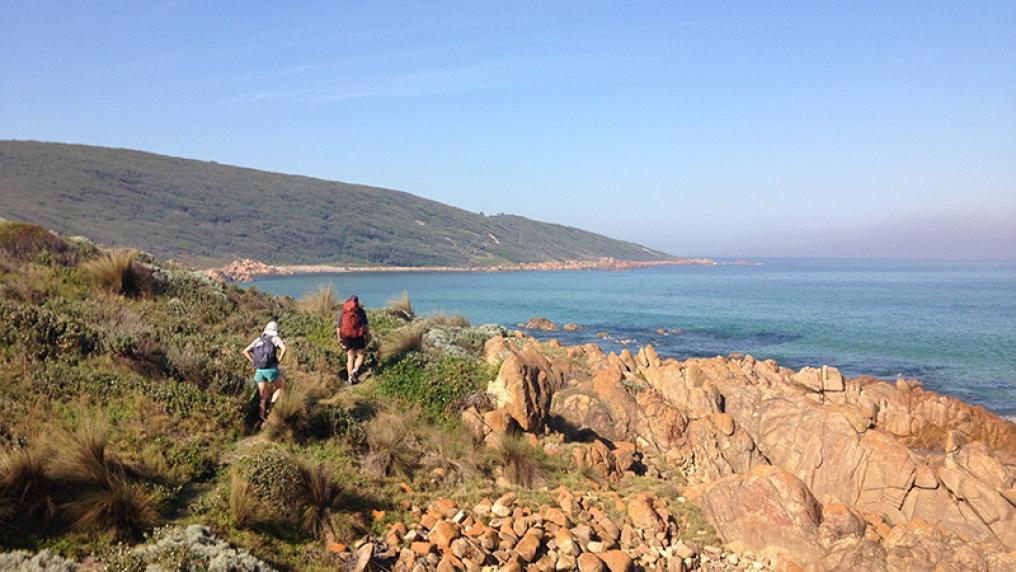Practical tips for promoting walking & tackling health inequities

The COVID-19 pandemic is exposing existing health inequities in Australia. One way to address these inequities is through taking steps to increase walking among disadvantaged groups.
Walking is the most popular type of physical activity in the world: it is accessible, convenient and does not require any special equipment or skills. It can be a form of active transport or an enjoyable activity in leisure-time.
Unlike other sports and activities such as tennis, golf and even cycling, participation in walking is free and therefore more accessible to people who are less wealthy.
A timely new systematic review sheds light on the best way to improve walking among disadvantaged groups. The review includes evidence from 35 studies, which explore factors that relate to walking for people who experience disadvantage.
It found that people who felt unsafe were less likely to walk. Safety concerns were particularly relevant factors for women and are likely to deter them from walking.
Safe infrastructure is the key factor that can encourage people to walk more, the review suggests. Investments in better street lighting and measures to reduce the level and speed of traffic can improve safety.
Other factors, such as the attractiveness of neighbourhoods and their walkability are also related to higher walking levels. The walkability of areas can be enhanced with better street connectivity and through the availability of amenities within walking distance. Low-cost interventions, which improve the aesthetics of the physical environment such as clean streets and well-maintained open spaces, can increase walking levels.
Social support was also found to be one of the key factors which can encourage people to walk more. Local governments should consider investing more in increasing social cohesion and networks.
Perfect opportunity
Australia’s reduction in travel during the COVID-19 pandemic is a perfect opportunity to strategically invest into safe infrastructure, transform Australian cities into meccas for walking and cycling and reduce the gaps between disadvantaged and affluent areas.
Yet, it appears Australian cities are far from being meccas for walking and cycling. With gyms and recreational and sporting facilities temporarily closed due to COVID-19, few options are available for people to be physically active.
Due to physical distancing measures, people report walking being less pleasurable, as it is a challenge to go for a walk while maintaining a safe distance, especially in areas that have a low walkability score.
More than ever before, people feel how (dis)advantaged they are for living in a certain neighbourhood.
Ten million Australians are at greater risk of poor health due to their socio-economic status. Australian adults living in the most socio-economically disadvantaged areas have poorer mental health and are 1.4 times less physically active compared to those living in the affluent areas.
In several cities around the world, such as Milan, Auckland, Vancouver, and Berlin, the COVID-19 pandemic encouraged local governments to introduce short term measures for supporting walking and cycling (such as widened footpaths, closing and repurposing car lanes, reduced speed limit) and/or prepare long term plans for road modifications to make more space for cyclists and pedestrians and reduce the use of cars.
Wide-ranging impacts
The health impacts of these measures are likely to be wide-ranging, including in reducing air pollution, which may be one of the key contributors to deaths from COVID-19.
Other cities such as Copenhagen and Amsterdam invested in their walking and cycling infrastructure before the pandemic and thus witnessed many benefits such as an increase in activity levels and a decrease in traffic congestion and air pollution.
More walkers and cyclists also mean fewer collisions, so a good way to improve overall traffic safety is to increase the numbers of people walking and cycling.
Insufficient physical activity is a key risk factor for burden of disease in Australia associated with arthritis, Type 2 diabetes, osteoporosis, obesity, cardiovascular disease, and depression.
Residents of the least walkable areas have higher blood pressure, higher odds of a prior diabetes diagnosis and are up to 33 percent more at risk of getting a cardiovascular disease, compared to people living in the most walkable areas, according to one study.
The COVID-19 pandemic will undoubtedly have a strong impact on the physical and mental health of vulnerable communities, which is why researchers are calling for early interventions.
As emphasised in the review, walking can have positive impact on both mental and physical health of socio-economically disadvantaged groups.
Governments at all levels need to react early and stop deepening of health inequities by investing in interventions which increase overall safety and promote walking.
Promoting walking as active transport or leisure-time physical activity will have multiple health and economic benefits and will contribute to closing the health equity gap between socio-economically disadvantaged and affluent Australians.
Authors
- Dr Melinda Craike, Associate Professor of Physical Activity and Health, Institute for Health and Sport and Health Policy Lead at the Mitchell Institute for Education and Health Policy
- Dr Toni Hilland, Senior Lecturer in Health and Physical Education, School of Education, RMIT University
- Bojana Klepac Pogrmilovic, Research Fellow in Health Policy at the Mitchell Institute for Education and Health Policy
Article first published in Croakey.



